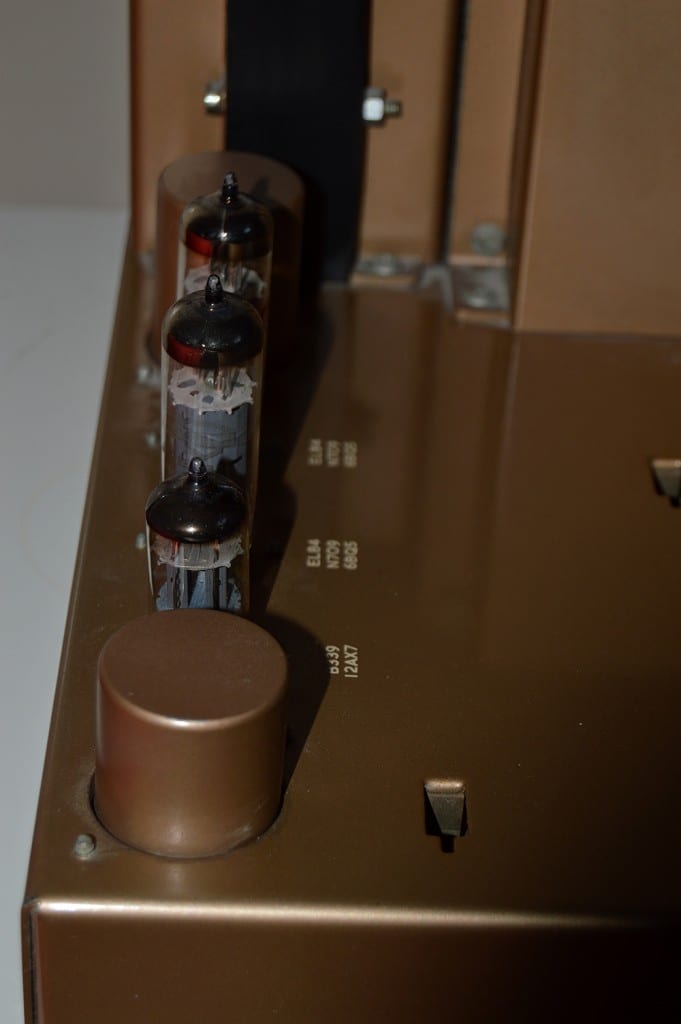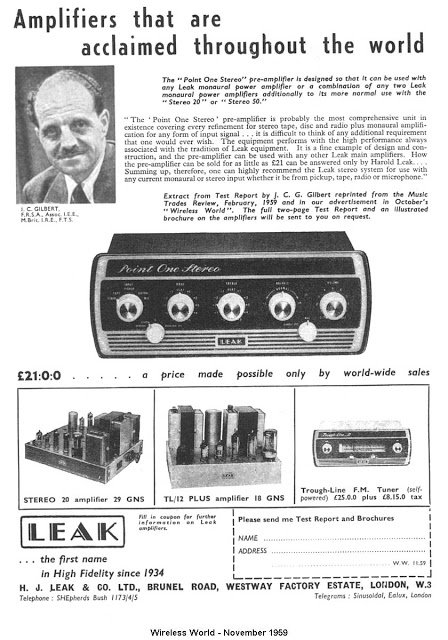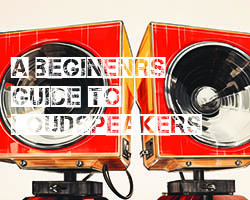Janine Elliot takes a step down memory lane with the much loved Leak Stereo 20 power amplifier.
If I had to select one item I have I my collection from the past century that made the earliest and biggest impact in the hifi industry 50 years later, it would have to be my Leak Stereo 20 and matching preamp. I still love the sound, though have considerably modified it, whilst leaving its beautiful capacitor cases intact.
Introduced in April 1958 at the Audio Fair in London, just weeks after the first stereo LP hit the platter, it originally appeared in Champagne Gold, which soon changed to Gold Bronze, the colour of mine, and later in 1964 a boring dark grey colour. The original price of 29 guineas plus a further 20 for the partnering Point One stereo preamp, was quite a hefty outlay when the average monthly salary was only four pounds more. The history of Harold Leak’s company, H.J. Leak & Co. Ltd, from its original offices in 470 Uxbridge Road, London, W12, is quite a major one in terms of audio. Leak revolutionised the performance standards of amplifiers way back in June 1945, when, as a result of his research, he transformed amplifier distortion down from an average of 3-4% to an unprecedented 0.1%. Consequently all his products were labelled Point One. His world-beating amplifier designs gave Leak a world-wide reputation.
The Leak Stereo 20 is therefore actually called the “Point One Stereo 20” denoting the fact that as well as the 0.1% harmonic distortion, 20 watts is had by both channels (10 + 10 Watts). It carries on from the slightly earlier and similar design TL12 Plus (1957), having identical output stages, with EL84’s, though using two ECC83’s instead of EF86 and ECC81 in the driver stage of the design. The GZ34 rectifier is used in both designs. The much earlier original TL12 from 1949 had much bigger bottle valves, and this model was highly successful, with sales to the BBC, Swiss Broadcasting Corporation and the Italian Broadcasting Corporation. Over 2000 units were sold to America in the first 5 months, an enviable reputation from a fledgling British company. What really made the Stereo 20 amplifier special for me was the clever safety design built in to protect it from overloading. A 100Ω/3W resistor is soldered upside down at the front of the unit, and bearing in mind that with the amplifier operating normally (ie, capacitors and valves in good condition), this resistor dissipates two-and-a-half watts and therefore runs pretty hot. If a coupling capacitor fails and it then puts a positive voltage onto the control grid of the output valve, it will pass more current and may eventually go virtual short circuit. This means the resistor will get extremely hot and will de-solder itself from the connector and drops off, protecting the transformers. I was given a faulty Leak Stereo 20, which had quite simply protected itself at some point, so all I needed to do was re-solder it back and start listening! So, if you get offered a faulty Leak, check this safety point. I changed all the capacitors and valves on my Leak, and only needed to change some of the resistors and clean the joints on my Varislope preamp to get the pair working again in harmony.
And sound good it certainly does, with a typical bass and treble warmth and roll off typical of valve amplifiers from this period, though it has a great mid-band making for great vocals and strings. The quoted frequency response is 20-20,000Hz+/-0.5dB, so it is still very acceptable. The pre-amp is the weakest link, though has a considerable number of listening options and settings in the VariSlope Stereo version from 1960, similar to the original Point One from 1958. Despite a 0.01% total harmonic distortion and three input sensitivities its output S/N ratio was 52dB for moving magnet phono and only 60dB for line (compared with 80dB for the Stereo 20 power-amp). The Leak VariSlope pre-amplifiers (they started in 1952 in mono form) were designed to slope the high frequency output to enable the high-frequency distortion from inadequate disc reproduction of the day to be filtered out – with minimal effect on the audio signal itself. Like other Leak pre-amps, and most audio of its day, it was designed to be mounted in a timber cabinet, and all looked magnificent and quite modern even today, certainly in the gold bronze, flat fronted models. Indeed, the earlier incarnations looked more modern than the later “Varislope Stereo” (1960) in its curved burgundy red and gold ‘plasticky’ front. Just as early cars were bought in basic form and you sent it to a coach builder to make the bodywork and seats, so early hifi was often bought in the “nude” for you to make the cabinets. As well as a number of versions appearing of this preamplifier, so did later models of the power amp. As the “20” went to production, a “50” appeared with 25 Watts per channel and in 1964 the “60” with its 30 Watts per channel (both with EL34’s instead of EL84’s output valves). Neither of these models was as iconic as the 20. 
In 1963 Harold Leak moved to integrated amplifiers with the transistor Stereo 30, and in 1968 with the Stereo 70 with yes you guessed, 35 Watts per channel. Both failed as products and proved to Harold that Valve worked best. In common with even his earlier TL12, TL25 and TL50 mono amplifier, the bigger output they offered, the worse the sound. Therefore the best models to buy would be the stereo 20 followed by the TL12.
Back to the Stereo 20, I use mine with the minimalist Meridian 101 preamplifier, a combination that today would easily pass as a £1000 offering, and the much higher output from the 101 does not give the Stereo 20 any problems; the 10 Watts per channel is no slouch up against my Krell 250W goliaths. The original VariSlope and Point One preamps were designed for tape outputs, and not modern-day digital players, and so they are very low level, and the sound quality does not match that of the power-amp.
Would I recommend you finding a Leak on eBay? Of course I would, and if you could find the earliest champagne gold version, then snap it up whatever the condition, as they are very rare objects. With all models, check the underside for large amounts of wax which may have run out of the transformer if it’s been overheating. The mains transformer, as I mentioned earlier, can be problematic, though the safety resistor should have done its job well. Like all old things, they start to leak and so the capacitors will most definitely need changing, but whatever you do, don’t disassemble the two original “can” electrolytic capacitors visible in line with the valves, as the Stereo 20 won’t look the job anymore, and certainly not be worth as much. What I did originally was disconnect them and use tiny switch-mode power supply capacitors (47uF, 400V) which I strapped onto the underside of the original valves. Whilst this doesn’t look very nice, it is underneath so only flies and spiders would see it anyway. I have now modded my Leak even further to set it to the next level.
To the sound, whilst slow and imprecise by today’s standard, is very musical and therefore enjoyable, particularly on vocal and orchestral music. It even tries its best on pop and passes quite admirably, though if it had its own mind of 1958 I wonder what it would think of it all. The Stereo 20 was the pinnacle of Harold Leak’s work, and luckily still keep his reputation sound (sic) today. I remember his later products, such as the Sandwich speakers and the time delay compensated 3050’s speakers sitting in Lasky’s in Tottenham Road, London, and whilst these were iconic inventions, are not the first thing you think of when you mention his name. Leak was a great name, and if only someone would revive the brand again, just as they have iconic cars such as Mini, Fiat 500 and VW Beetle, I wonder what it would sound and look like. Not that this hasn’t been done before. Audio Innovations begat Audion and AudioNote of Japan, as have many other manufacturers rebranded or bought into old names. Some manufacturers like Transcriptors claim to have re-appeared again, and of course some present-day manufacturers have even re-released old models, like Quad II, and even famous Musical Fidelity A1 integrated amplifier of the 1984 was reborn by them twenty years later. Best, perhaps, that we just add some TLC on the original TL and Stereo 20 and just bring them back to life again in our own homes by ourselves.
Janine Elliot



















































































































































































































You must be logged in to leave a reply.